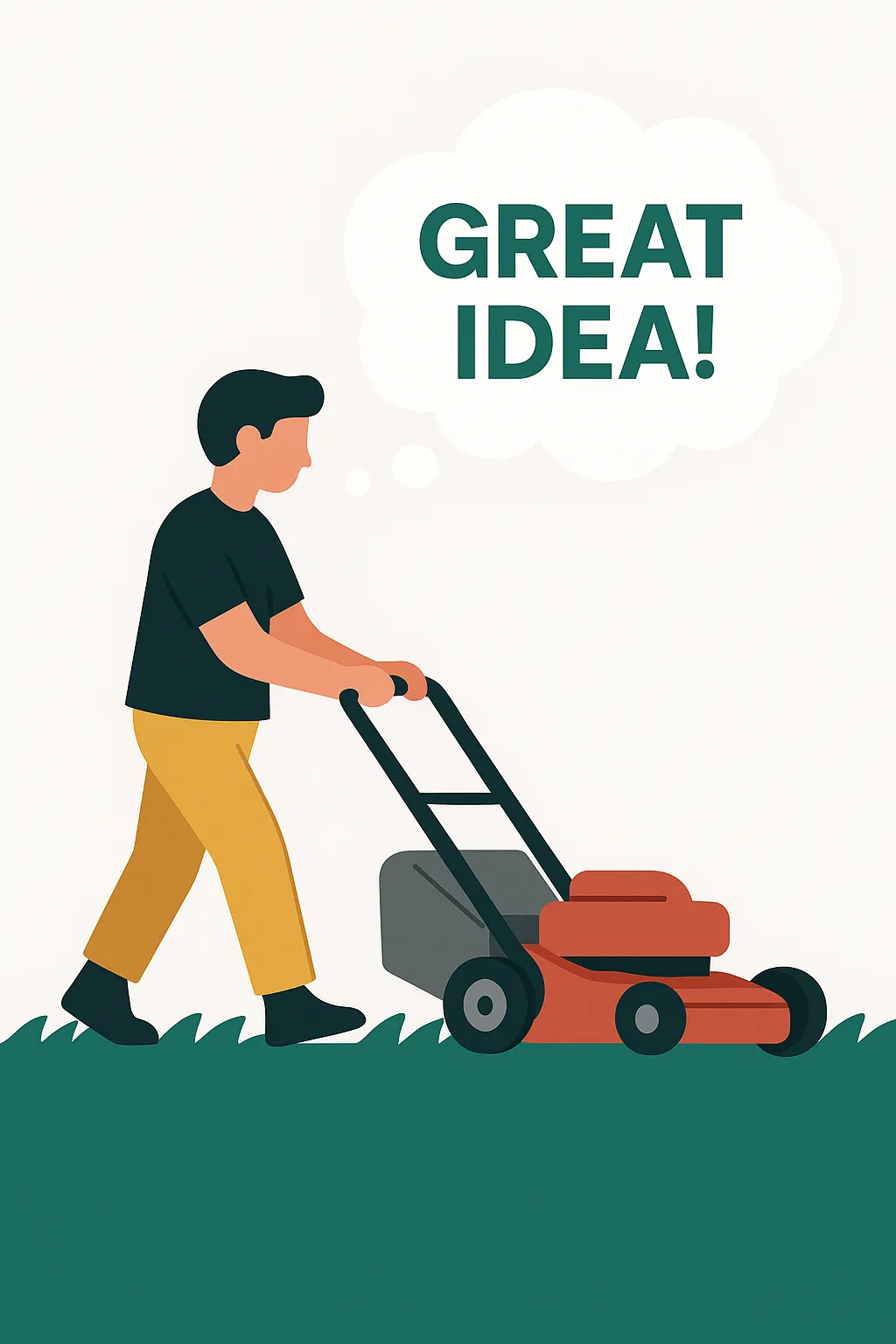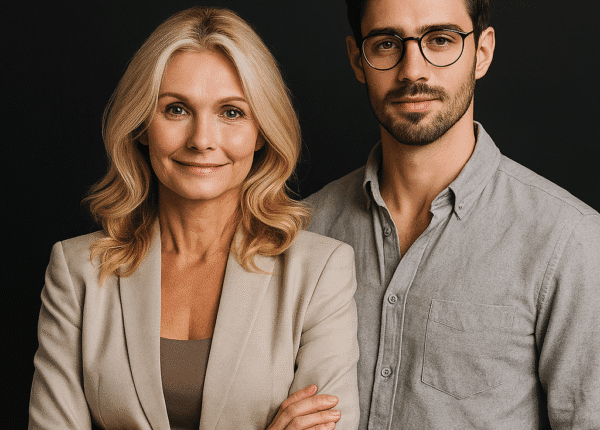How I Capture and Assess Brainstorming Ideas Quickly Using ChatGPT

The Real Story: How It Happens
Picture this: I’m mowing the lawns on a Saturday, and suddenly a great idea pops into my head. Normally, that idea would be lost by the time I put the mower away — maybe scribbled on a scrap of paper, maybe forgotten completely.
Now, it’s different. I pull out my phone, open the ChatGPT app, tap the mic and say:
“Add to Brainstorming: What if Changeable created a ready-to-go AI governance toolkit for councils?”
That’s it. ChatGPT captures it, runs an expert assessment (using my virtual team of finance, governance, strategy, and tech personas), and logs the results straight into my Brainstorming Folder.
By the time I finish the lawn, the idea has already been:
- Evaluated for strategic fit, market potential, technical feasibility, and financial viability.
- Given a traffic light score.
- Stored neatly in my indexed Brainstorming Folder with today’s date.
No forgotten sparks. No half-finished notes. Every idea gets a fair look — instantly.
But here’s what gets overlooked: AI doesn’t know your industry. It doesn’t understand your niche. It doesn’t have decades of human experience. That’s the domain of subject matter experts (SMEs). Whether you’re a lawyer, engineer, farmer, designer, healthcare worker, or policy adviser, your judgement, creativity, and lived experience can’t be automated.
What AI can do is amplify it.
Why I Built This System
As a founder, consultant, and dad, ideas hit me at odd times — on the sidelines of a rugby game, at the gym, even in the supermarket. Before, they were scattered. Now, I’ve got a repeatable system that keeps creativity flowing without creating clutter.
And the best part? It feels effortless. I just talk. The system does the rest.
- Generate concept sketches in minutes
- Test structural scenarios instantly
- Automate compliance checks
- Produce immersive visualisations for clients
Their role doesn’t disappear. It evolves. They go from spending 80% of their time on routine tasks to 80% on creative, high-value work. In this way, SMEs across industries become superhuman: faster, more accurate, and more impactful than ever before.
The Structure Behind It
Once the idea is captured, here’s what happens next.
A Dedicated Brainstorming Folder (Inside ChatGPT)
- A locked-purpose chat that acts as my folder.
- Every idea is numbered, logged, and indexed automatically.
- Active ideas stay at the top; finished ones move into an archive for future reference.
Personas Do the Heavy Lifting
Instead of me wearing every hat at once, I let my AI personas do the first-pass analysis:
- Marcus (GRC) → Governance, compliance, risk.
- Elias (Finance) → ROI and viability.
- Nova (Engineer) → Technical feasibility.
- Ava (CEO) → Strategic fit and market potential.
It’s like having my advisory board on-call, 24/7.
There’s also a risk of over-reliance. If we blindly accept AI’s output without expert oversight, errors, biases, or ethical issues can creep in. The human layer — interpretation, empathy, accountability — must remain at the core.
The Traffic Light System
Ideas are scored with a simple visual:
- 🟢 Green → Strong fit, worth prototyping.
- 🟠 Amber → Needs validation or more research.
- 🔴 Red → Not viable right now.
Each gets a mini one-pager with the raw idea, traffic light breakdown, risks, and recommended next steps.
Templates for Consistency
Every assessment follows the same format:
- Idea #, submitter, date
- Raw idea
- 🚦 Feasibility snapshot (strategic, technical, market, financial)
- Risks & considerations
- Next steps
It keeps things consistent, so scanning the folder is easy.
The Imagery Backlog
Some ideas need visuals — workflows, dashboards, infographics. Instead of generating on the spot, I keep an Imagery Backlog.
- Visual briefs are numbered and linked back to the idea.
- Status shows pending or completed, with dates.
- When I’m ready, I can generate visuals on desktop in batches.
Why This Works
For me, this system means:
- Every idea is captured instantly.
- Every idea is assessed fairly.
- Multiple perspectives are built in.
- Visuals are generated when I need them.
- Everything is structured, organised, and easy to revisit.
It turns “random spark” moments into actionable innovation — without adding admin.
Final Thought
Brainstorming doesn’t have to be messy. With ChatGPT acting as both assistant and advisory board, I can go from a half-formed thought while mowing the lawn to a fully assessed idea in minutes.
If you want to see how Changeable uses AI to make innovation practical for SMEs, councils, and enterprise — Book an AI Discovery Workshop.
Have a question?
ChatGPT acts like a supercharged brainstorming partner—sparking fresh ideas fast, helping surface unexpected angles, and offering structured suggestions that you can build on, refine, and personalise. It’s about accelerating creativity, not replacing it.
Ask explicitly for diverse, even radical ideas. Try prompts like “Give me 20 radically different ideas,” or ask it to “make these ideas bolder.” Also, start new chats to reset bias and experiment with prompt structure to unlock variety.
Not entirely. ChatGPT is a brilliant idea generator, but it lacks deep emotional insight and domain nuance. Combine its output with human reflection, critique, and iteration to get the best results.
Yes—ChatGPT may produce plausible but inaccurate details. It shouldn’t be fed sensitive or confidential data, since inputs may be used for model training. Always verify and refine outputs with human expertise.
Use chain-of-thought prompting, multiple ask-and-refine cycles, and role-play prompts (e.g., “You’re an expert travel agent—what ideas would you suggest?”). These strategies boost creative thinking and idea diversity.




